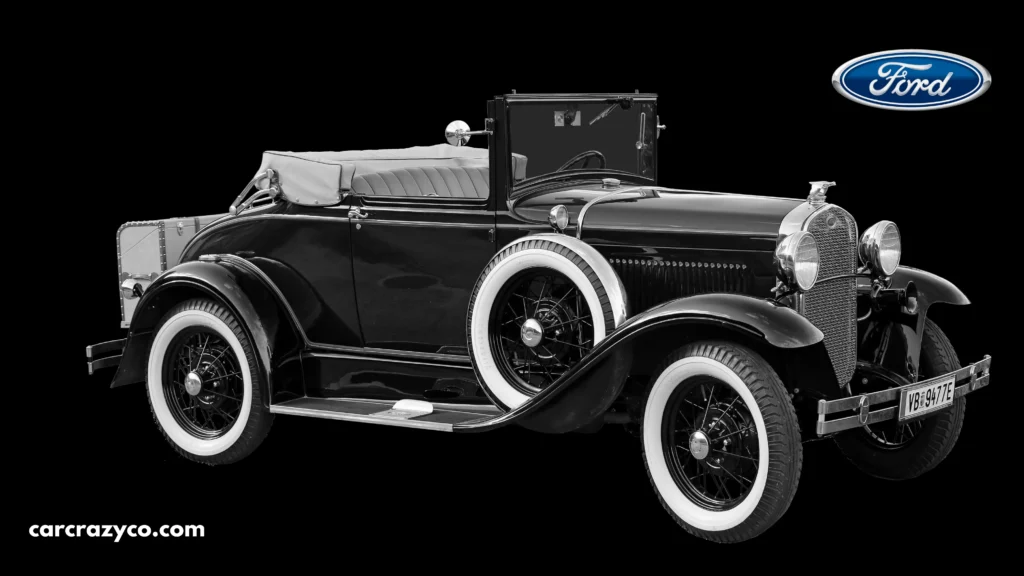The day Ford was founded didn’t just mark the birth of a company — it marked the beginning of a global movement that reshaped how the world moves, works, and lives. Few dates in industrial history are as impactful and enduring.
On June 16, 1903, in a rented factory in Detroit, Michigan, Henry Ford and a small group of investors created the Ford Motor Company. What began with a dream turned into one of the most influential enterprises in history.
Understanding when and how Ford started helps us appreciate the roots of modern manufacturing, innovation, and mobility. Let’s take a closer look at the moment Ford was born — and why it still matters today.
Contents
1. June 16, 1903 – The Official Beginning
Ford Motor Company was officially founded on June 16, 1903, with a starting investment of just $28,000 from 12 investors. Among them was the visionary, Henry Ford.
It started in a small Detroit workshop, far from the massive factories we know today. The first car sold, a Model A, came off the line that same July.
2. Henry Ford’s Vision and Early Struggles
Before 1903, Henry Ford had already made two failed attempts at starting car companies. But he believed in creating an affordable vehicle for the everyday person, not just the rich.
This idea was revolutionary — most cars back then were expensive luxury items. Ford wanted to bring mobility to the masses through efficiency and simplicity.

3. The Model T and Mass Production
In 1908, Ford introduced the Model T, which would become the most influential car of its time. It was simple, durable, and affordable.
By 1913, Ford had pioneered the moving assembly line, reducing production time and costs. This innovation forever changed the way products are made across all industries.
4. Expansion and Global Influence
By the 1920s, Ford was not just a car company — it was a global powerhouse. Factories were built in Canada, England, Germany, and other countries.
Ford vehicles became symbols of freedom, progress, and American ingenuity. Its influence stretched far beyond cars, touching labor rights, wages, and manufacturing systems.
5. Ford’s Legacy Today
The founding of Ford set in motion more than just a brand — it sparked the rise of the modern automobile era. Today, Ford continues to innovate with electric vehicles, AI, and mobility solutions.
But at its heart, the story still starts on that day in 1903, when a small dream became a global symbol. That founding moment defines what Ford still stands for: progress, performance, and people.

Conclusion:
June 16, 1903, is more than a date in history — it’s the beginning of a story that still moves millions. Ford’s founding marked a shift from luxury travel to personal freedom on wheels.
From the Model A to the Mustang, and now to EVs like the F-150 Lightning, the company still reflects Henry Ford’s vision of innovation that serves everyday people.
Knowing when Ford was founded reminds us how big ideas can grow, and how one company’s start can influence the future of transportation forever.
FAQs:
1. When was Ford officially founded?
Ford was founded on June 16, 1903, in Detroit, Michigan, by Henry Ford and 11 investors.
2. Who founded the Ford Motor Company?
Henry Ford founded the company, supported by investors like John Gray and Alexander Malcomson.
3. What was the first car Ford made?
The first Ford car was the Model A, sold in 1903, just weeks after the company started.
4. What made Ford different from other car companies?
Ford introduced mass production, making cars affordable and accessible to the average person.
5. Why is the founding of Ford so important?
It sparked the automobile revolution, made personal transport mainstream, and reshaped the manufacturing world.
6. How much money did Ford start with?
Ford began with $28,000 in capital, a small amount that led to one of the world’s largest companies.








